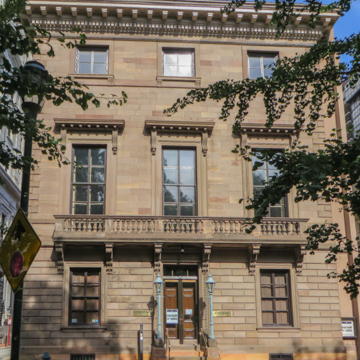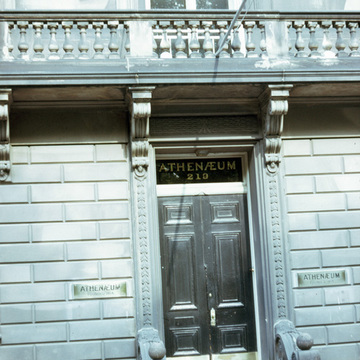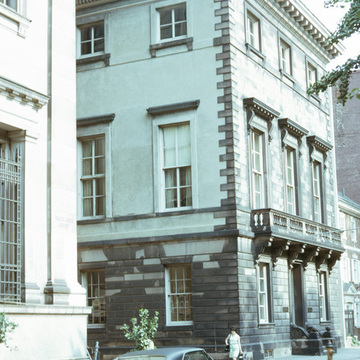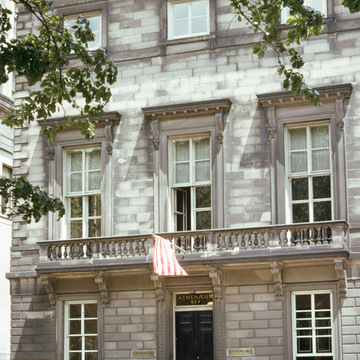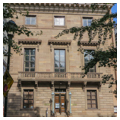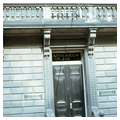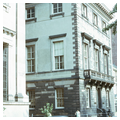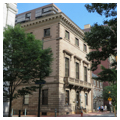The Athenaeum was founded as a literary and cultural society on the model of similarly named New England organizations. Whereas in the north, intellectual energy was centered in learning and European culture, in Philadelphia it was centered in the industrial world epitomized by the Franklin Institute (PH41). As a result, the Athenaeum, though club and library, took longer to build, sought various partners including the Library Company, explored options including having commercial space on the first floor, and went through multiple competitions in 1840, 1841, and 1845 before finally settling on Scots-born John Notman's version of a Renaissance Revival clubhouse in the manner of British clubs by Charles Barry. With its cubic mass accented by two tones of sandstone, the dark brown of the base and the piano nobile, trimmed with the sandstone yellow of its cornice, it stood out from the brick city and denoted the coming Victorian color and a wider source of materials transported by steam locomotives.
The interior was devised to include rental space; the early offices of the American Institute of Architects were here in rooms decorated by Frank Furness (1870). A handsome


